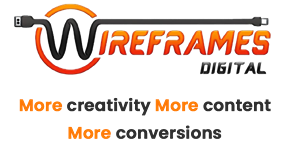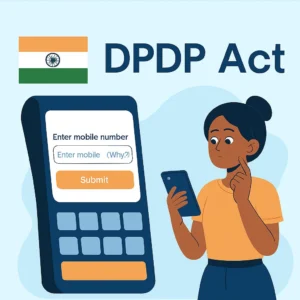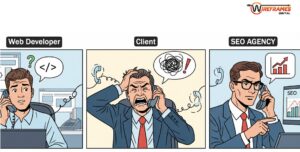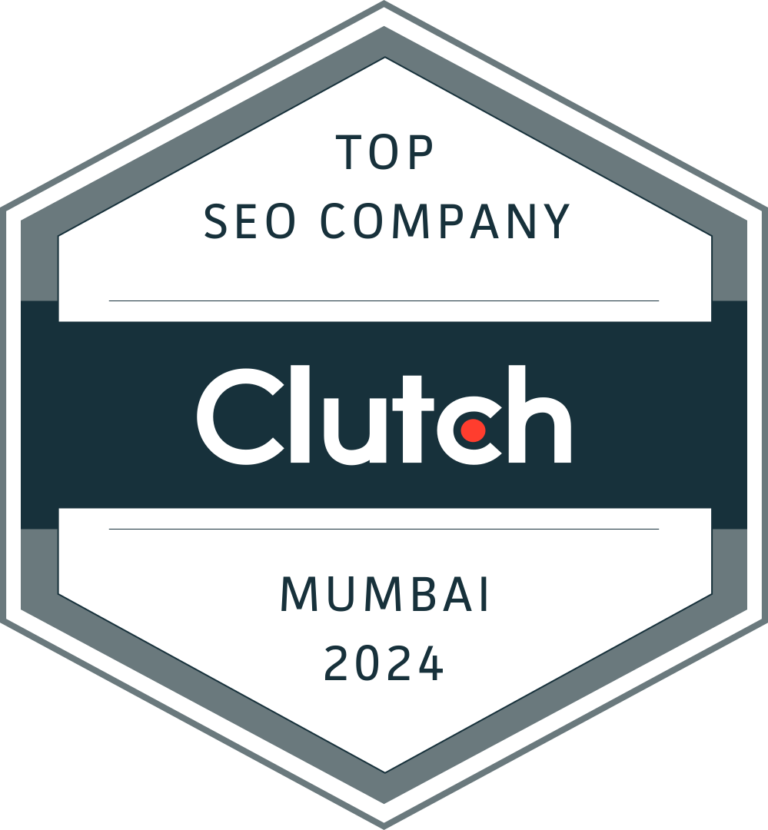In today’s competitive insurance market, having a high-converting website can significantly differentiate your insurance agency from the competition. With the advent of digital marketing for insurance agencies and SEO optimization for insurance companies, it’s crucial to create an online presence that not only attracts visitors but also converts them into leads and clients. This blog will provide a detailed guide on how to optimize your insurance agency’s website to improve conversion rates.
Introduction
The digital world offers tremendous opportunities for insurance agencies to expand their reach and increase their client base. However, having a website isn’t enough; you need an optimized website that effectively converts visitors into leads and clients. This process involves several strategies, including SEO optimization for insurance companies and digital marketing for insurance agencies.
Overview of Website Optimization
Website optimization involves improving various aspects of your site to enhance its performance and ability to convert visitors into clients. This includes improving the site’s design, usability, speed, and integrating it with comprehensive SEO and digital marketing strategies.
Relevance in the Insurance Industry
Given the competitive nature of the insurance industry, having a well-optimized website can significantly impact your agency’s success. An optimized website enhances user experience, increases engagement, and improves conversion rates, ultimately contributing to the growth and profitability of your insurance agency.
1. Understanding Conversion Rates
1.1 What is a Conversion Rate?
A conversion rate is the percentage of website visitors who take a desired action on your site, such as filling out a contact form, requesting a quote, or purchasing a policy. Understanding and improving your conversion rates are critical for the success of your website.
1.2 Common Conversion Goals for Insurance Agencies
For insurance agencies, some common conversion goals include:
- Getting Online Quotes: Visitors use your website to get an instant online quote for various insurance products.
- Scheduling Consultations: Prospective clients book appointments to consult with your insurance agents.
- Newsletter Sign-Ups: Visitors subscribe to your newsletter to receive updates and information.
- Contact Form Submissions: Potential clients fill out and submit contact forms to request more information or speak to a representative.
2. SEO Optimization for Insurance Companies
2.1 Conducting an SEO Audit
The first step in SEO optimization for insurance companies is to conduct a thorough SEO audit. An SEO audit helps identify weaknesses and opportunities for improvement on your website. Tools like Google Analytics, SEMrush, and Ahrefs are invaluable for performing an SEO audit. You can uncover issues such as broken links, slow page speeds, and underperforming keywords.
2.2 Keyword Research
Keyword research is a fundamental aspect of SEO. It involves identifying the search terms your potential clients use to find insurance services. Use tools like Google Keyword Planner, Moz, and Ubersuggest to find relevant keywords with high search volume and low competition. For an insurance agency, keywords might include “insurance quotes,” “best car insurance,” “health insurance plans,” and “home insurance.”
When performing keyword research, it’s also important to consider long-tail keywords—phrases that are more specific and often less competitive. These could include “affordable health insurance for families” or “cheap car insurance for young drivers.” Long-tail keywords can attract more targeted and ready-to-convert visitors.
3. Digital Marketing for Insurance Agencies
3.1 Integrating SEO with Digital Marketing Strategies
While SEO optimization for insurance companies is vital, it should be part of a broader digital marketing strategy. Digital marketing for insurance agencies involves various tactics, including content marketing, social media marketing, email marketing, and paid advertising. Integrate your SEO efforts with these digital marketing strategies to create a cohesive plan that drives traffic, engagement, and conversions.
3.2 Content Marketing Strategies
Content marketing is essential in digital marketing for insurance agencies. By creating valuable and informative content, you can attract and engage your target audience, build trust, and establish your agency as a thought leader in the industry. Here’s how to develop a robust content marketing strategy:
- Blog Posts: Write articles addressing common questions and concerns related to insurance. Topics could include “How to Choose the Right Health Insurance Plan” or “Top 5 Tips for Lowering Your Car Insurance Premium.”
- Whitepapers and eBooks: Create in-depth guides and reports that provide valuable insights into specific insurance topics. These are great tools for lead generation and can be used as gated content to capture visitor information.
- Videos and Webinars: Produce video content and host webinars to explain complex insurance concepts, share client testimonials, or provide expert advice. Video content is highly engaging and can significantly boost conversions.
- Social Media Content: Share your blog posts, videos, and other content on social media platforms like Facebook, LinkedIn, and Twitter. Social media helps increase your content’s reach and drives traffic to your website.
4. Best SEO Practices for Insurance Agencies
4.1 On-Page SEO Techniques
On-page SEO involves optimizing various elements of your web pages to improve search engine rankings and user experience. Here are some essential on-page SEO techniques:
- Title Tags and Meta Descriptions: Ensure your title tags and meta descriptions are optimized with target keywords and provide a clear, concise summary of what each page is about. This information helps search engines understand your content and encourages users to click on your site in search results.
- Headers (H1, H2, H3, etc.): Use header tags to structure your content and include relevant keywords. Headers make your content more readable for users and help search engines understand the hierarchy of your information.
- Natural Keyword Usage: Avoid keyword stuffing and ensure your keywords flow naturally within the content. Focus on providing value to the reader while incorporating keywords strategically.
- Image Optimization: Optimize images by using relevant alt tags, compressing image files to reduce loading times, and ensuring images are appropriately scaled for different devices.
4.2 Technical SEO Aspects
Technical SEO involves optimizing the technical elements of your website to improve its performance and ranking. Key technical SEO aspects include:
- Mobile-Friendly Site: With the increase in mobile browsing, it’s essential to have a responsive website that provides a good user experience on all devices. Google prioritizes mobile-friendly websites in its search rankings.
- Site Loading Speed: A fast-loading website is crucial for user experience and SEO. Use tools like Google PageSpeed Insights to identify and fix issues that slow down your site. Compress images, leverage browser caching, and minimize CSS and JavaScript files to improve loading times.
- Secure Website (HTTPS): Security is paramount for an insurance agency website, as visitors need to feel confident that their information is safe. Ensure your website uses HTTPS, which also serves as a ranking factor for Google.
4.3 Off-Page SEO Strategies
Off-page SEO involves activities outside your website that can impact its ranking and authority. Important off-page SEO strategies include:
- High-Quality Backlinks: Acquire backlinks from reputable websites in the insurance and related industries. High-quality backlinks drive traffic and signal to search engines that your site is trustworthy and authoritative.
- Social Media: Leverage social media platforms to promote your content, engage with your audience, and drive traffic to your website. Social media interactions and shares can indirectly influence your SEO by increasing visibility and traffic.
- Online Reviews and Citations: Encourage satisfied clients to leave positive reviews on platforms like Google My Business and Yelp. Positive reviews and citations from authoritative sites boost your online reputation and can improve your local SEO.
5. Enhancing User Experience for Better Conversions
5.1 Website Design and Layout
A well-designed website can significantly impact your conversion rates. Here are some tips to enhance your website’s design and layout:
- Clean and Professional Design: Ensure your website has a clean, professional design that reflects your brand identity. Avoid clutter and use consistent color schemes and fonts.
- Visual Appeal: Use high-quality images, videos, and graphics to make your website visually appealing. Visually engaging content can capture visitors’ attention and keep them on your site longer.
- Consistency: Maintain consistency in design elements, fonts, and colors across different pages. Consistent design enhances the user experience and strengthens your brand identity.
5.2 Improving Website Navigation
Effective website navigation helps users find the information they need quickly and easily. Improve your site’s navigation with these tips:
- Simple Navigation Menu: Keep your navigation menu simple and intuitive. Use clear and descriptive labels for your menu items.
- Breadcrumbs: Use breadcrumb navigation to help users understand their location within your site and easily return to previous pages.
- Search Functionality: Include a search bar to allow users to find specific information quickly. Ensure the search functionality is prominent and easy to use.
5.3 Call-to-Action Optimization
Call-to-actions (CTAs) are critical for guiding visitors towards conversion. Optimize your CTAs with these strategies:
- Crafting Compelling CTAs: Use strong, action-oriented language that clearly communicates the benefit of taking action. For example, “Get Your Free Quote Now” or “Schedule a Consultation Today.”
- CTA Placement and Design: Place your CTAs strategically throughout your site, such as at the top of the homepage, at the end of blog posts, and within the content. Use contrasting colors to make CTAs stand out and attract attention.
5.4 Enhancing Mobile Experience
An increasing number of users access websites from mobile devices, making it crucial to provide a seamless mobile experience. Enhance your website’s mobile experience with these steps:
- Responsive Design: Ensure your website is responsive and automatically adjusts to different screen sizes. Test your site on various devices to ensure it provides a smooth user experience.
- Simplified Forms: Simplify forms for mobile users by reducing the number of required fields and using auto-fill features. Make sure forms are easy to fill out on smaller screens.
6. Measuring and Analyzing Success
6.1 Using Analytics Tools
To measure the effectiveness of your SEO optimization for insurance companies and digital marketing for insurance agencies, use analytics tools like Google Analytics, SEMrush, and Crazy Egg. These tools provide valuable insights into your website’s performance and help you make data-driven decisions.
6.2 Key Metrics to Monitor
Monitor key performance indicators (KPIs) to gauge your website’s effectiveness and identify areas for improvement. Important metrics to track include:
- Conversion Rate: The percentage of visitors who complete a desired action on your site.
- Bounce Rate: The percentage of visitors who leave your site after viewing only one page. A high bounce rate may indicate that your site is not engaging or relevant to visitors.
- Average Session Duration: The average amount of time visitors spend on your site. Longer sessions suggest that visitors find your content valuable and engaging.
- Organic Traffic Growth: The number of visitors who find your site through search engines. An increase in organic traffic indicates successful SEO efforts.
6.3 Continuous Improvement
SEO and digital marketing are ongoing processes that require continuous effort and improvement. Use the data from your analytics tools to make informed decisions and implement iterative improvements. Regularly test different elements of your site, such as CTAs, landing pages, and content, to find what resonates best with your audience. Stay updated with the latest SEO trends and digital marketing strategies to keep your website competitive and effective.
Conclusion
Optimizing your insurance agency’s website for better conversion rates is a multifaceted endeavor that involves integrating SEO optimization for insurance companies with comprehensive digital marketing for insurance agencies strategies. By focusing on user experience, conducting thorough SEO audits, implementing best SEO practices, creating valuable content, and continuously measuring and improving your efforts, you can create a highly effective online presence that converts visitors into clients.
Remember, the digital landscape is ever-evolving, so staying informed and adaptable is key to maintaining and improving your website’s performance. By following the steps outlined in this guide, you can ensure that your insurance agency’s website is not just another page on the internet, but a powerful tool for growing your business and achieving long-term success.
















